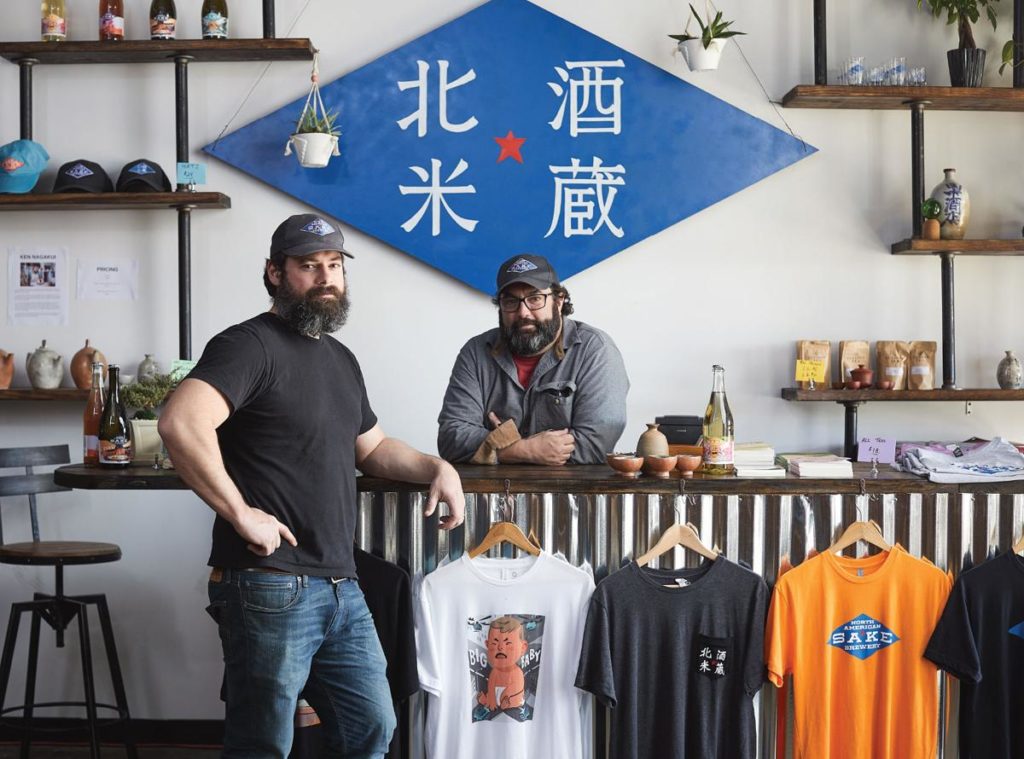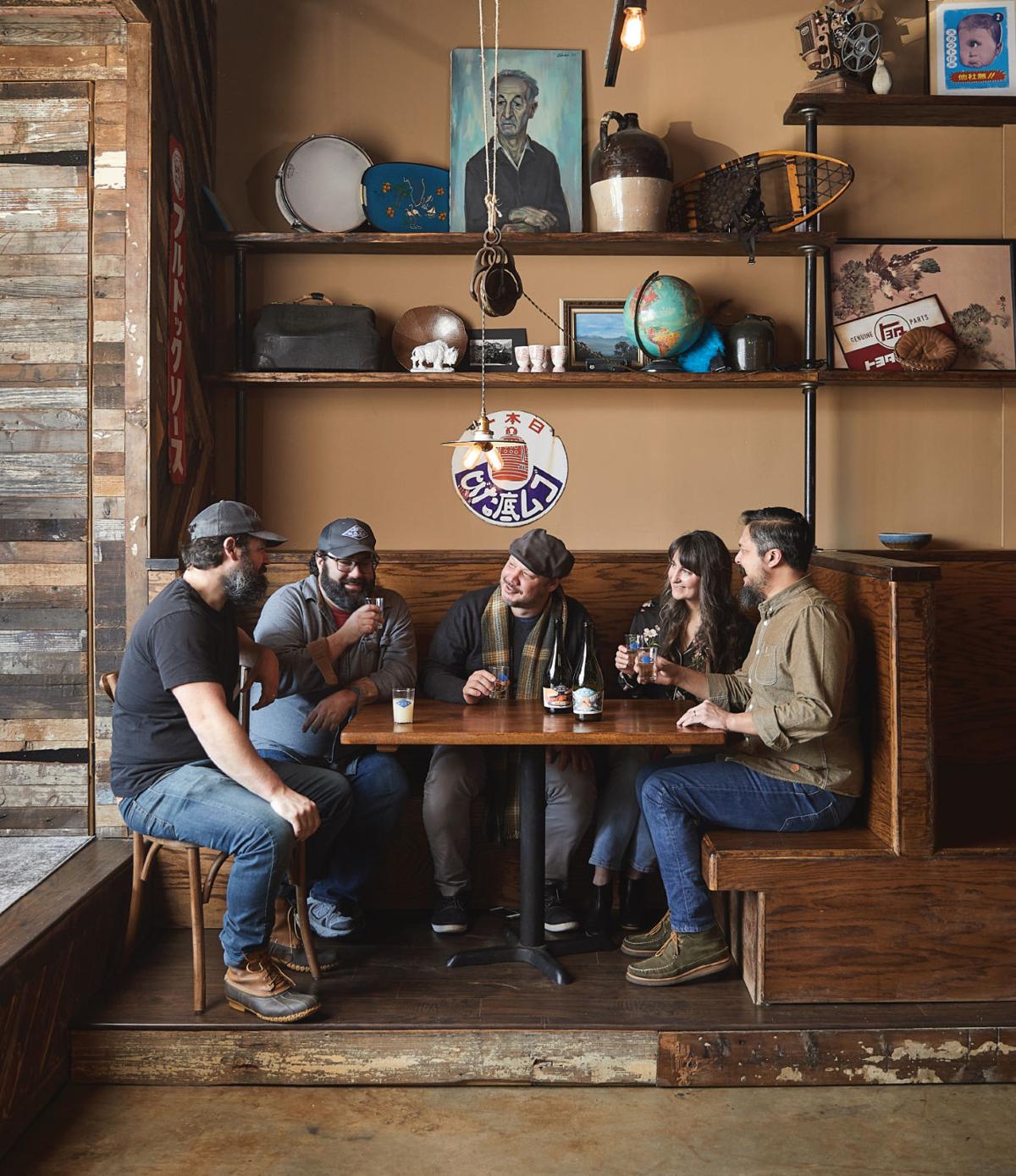
by Matthew Korfhage
Distinction
Apr 19, 2019
In IX Art Park, a self-consciously hip enclave in Charlottesville with a weekend farmer’s market and more wall art than a New York subway, young couples stream into a sunny, knotted-wood taproom to taste Virginia barbecue and sample flights of inventive craft brews.
An hour after the brewery doors opened, you’d struggle to find a seat. Tables filled up with spicy poke bowls, kimchi-topped pastrami sandwiches and six-deep sampler flights of hazy or fruity house brews.
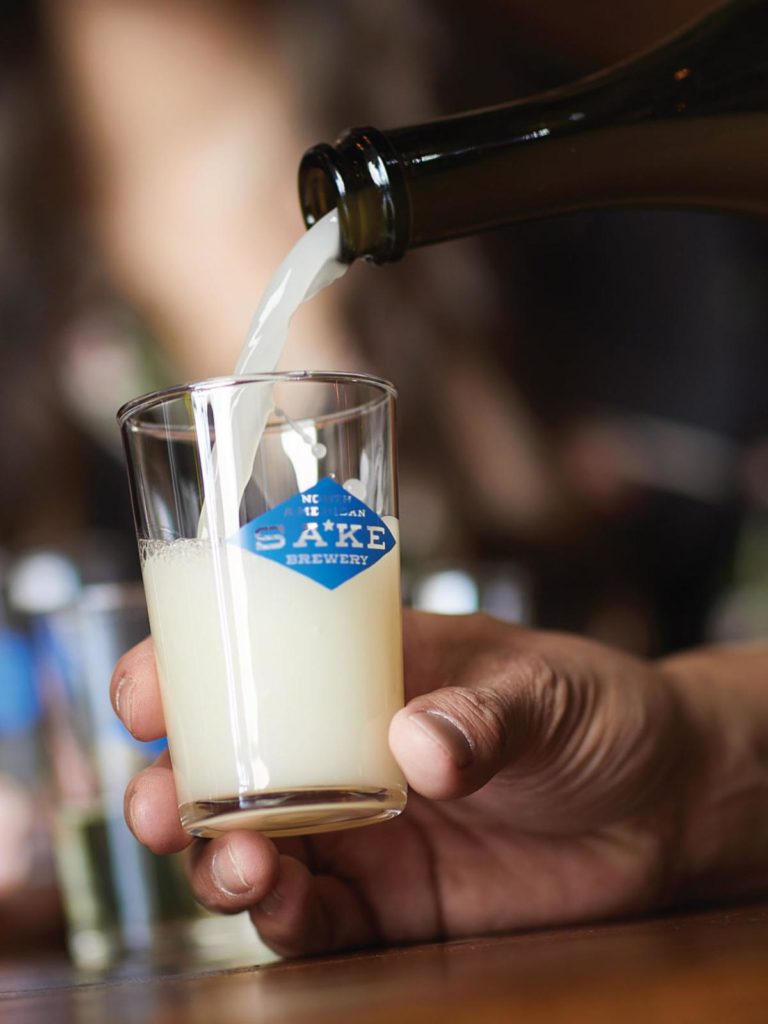
Above, a traditional nigori.
If this scene took place at popular Three Notch’d Brewing Co. next door, it’d be about as surprising as pecan pie. But this place isn’t making beer. Instead, the packed 6-month-old taproom at the North American Sake Brewery is serving a distinctively Virginian take on something made in only a handful of places in America and nowhere else in this state: Japanese-style sake, a thousand-year-old tradition of rice “wine” that’s brewed a little bit like beer.
North American Sake, which opened in October, is the latest example of the Japanese culinary boom in America. But while sake is growing, it’s still unfamiliar to most American diners and drinkers.
Sake can be every bit as refined and as varied as European wine or as funky as Belgian beer, deeply savory with wild notes of banana or flowers or so clean and crisp that it might as well be a winter breeze. But most sake drinkers here have been exposed only to the cheap bottles at discount sushi spots, where it’s often served hot to mask flavors – the equivalent of learning about American whiskey by drinking Old Crow.
We boarded the sake party bus to Charlottesville with food lover and photographer George Culver, and drank fine and fruity sake while the founders of North American Sake, Jeremy Goldstein and Andrew Centofante, laid down the ABCs of Virginia sake.
The story of Virginia sake began in a basement – OK, fine, it started in Los Angeles. That’s where Goldstein, then a filmmaker in Richmond, got his first experience with amazing sake. Four years ago he went to a special tasting held by a sommelier, and was floored by what he found.
“I grew up in California, where sushi and sake is everywhere. But I hadn’t had good sake. It was just a thing you drank with friends – hot, or in a sake bomb,” Goldstein says. “But I tasted for the first time cold, fresh, craft sake. I questioned why I’d never had it before.”
When he got back to Virginia, he brought a few choice bottles for Centofante, a home brewer. “Andrew and I had a great night, drank some really good sake, and he says, ‘I’d like to learn how to brew it.’ ”
Centofante set up a makeshift brewing lab in his basement. The first 5-gallon batch of homemade sake became two, then three, then 50. The men started sourcing their rice not from the supermarket but from specialty suppliers, and tapped into a loose network of Americans trying to re-create the Japanese tradition in America.
The partnership at first was simple. Centofante made the sake and Goldstein drank it. But soon Centofante was making so much that the pair started holding parties to have friends try it. This culminated in a massive tasting, with 50 bottles and almost as many friends.
“It was all gone in hours,” Centofante says. “They went through the party hunting down wounded soldiers, shaking the bottles to see if they still had sake in them.” Their friends also gave them a standing ovation. At that point, the pair realized they were probably on to something.
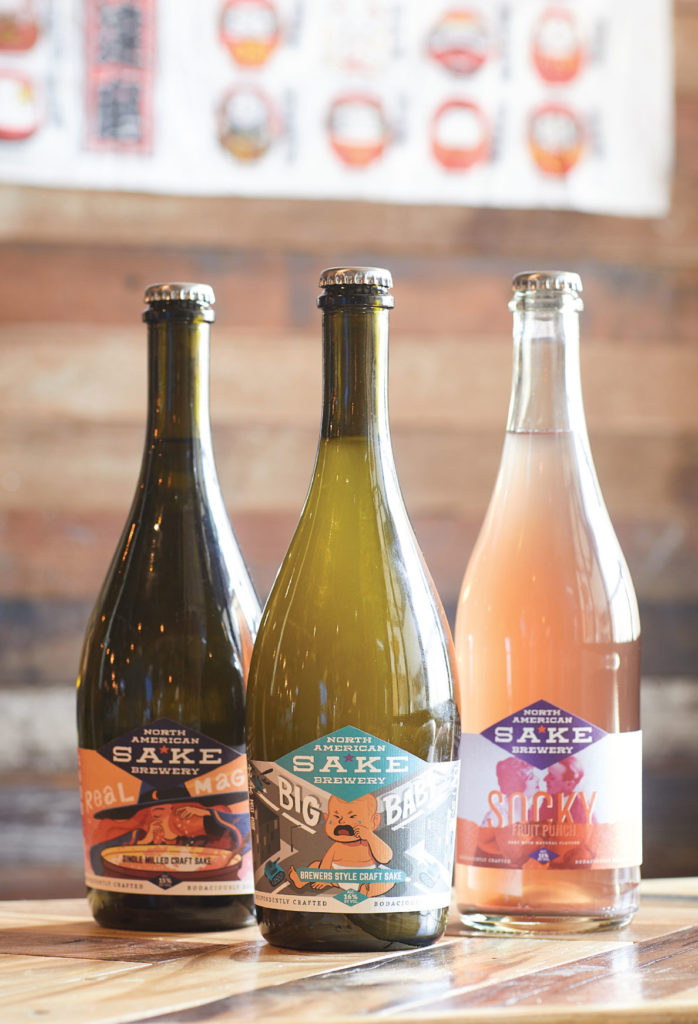
A selection from North American Sake’s lineup.
So, sake isn’t wine. But it isn’t quite beer either.
All fermentation involves yeast. That’s what turns the sugar in wine grapes or malted barley into delicious, delicious alcohol. But sake involves an extra step, and an extra-special fungus called koji – named the “national fungus” of Japan by its brewers association – that breaks down the starches in rice and turns them into sugar. Koji is also the stuff behind the deep, savory flavors in soy sauce and miso soup.
Before he makes each batch of sake, Centofante spends two days carefully spreading out and gathering a bed of steamed rice in his koji muro, a carefully controlled room in each sake brewery devoted to growing koji. When he balls the rice together, it gets warmer. And when he spreads it out, it releases the heat.
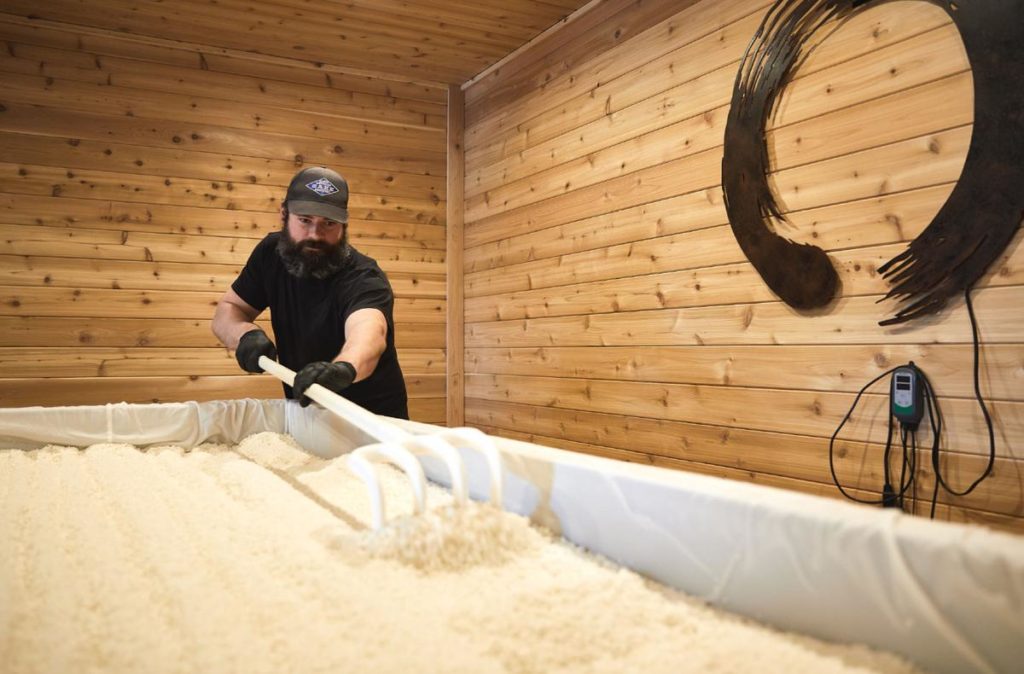
In the koji muro room, above, Centofante works rice in a zenlike practice of aerating it.
“When you do koji, it’s kind of a Zen thing,” he says. “You spread it out in rows like a meditation garden. But there’s also a purpose for those patterns: It makes for more surface area open to the air.”
Each batch of sake takes 30 days, and involves multiple layers of steamed rice and koji. In the fermentation tanks visible from North American Sake Brewery’s taproom, the koji makes sugar but also creates boomingly savory flavors like the ones in miso. And then the yeast turns the sugar into alcohol, along with adding fruity notes like banana or melon.
“It all happens in parallel,” Centofante says. “It’s a beautiful process.” Rice is religion in Japan – and with sake, it’s no different. The loftiest sake creations, called junmai daiginjo, involve milling down each rice grain for days until only the pure starch core remains: just 50 percent of each grain. The higher the polish on the rice, the more pure and fruity the flavors.
As for the really cheap sake served hot at your local shopping-mall sushi spot? Well, they might not mill it down much at all, and that can mean a lot more impurities and funny flavors: hot and boozy alcohol notes, or a rough and bitter bite.
“Higher-polish sakes are works of art, they’re amazing, but they’re expensive, and a lot of people may be intimidated by that,” Centofante says. “It’s kind of like the beer world: You’ve got your Bud Light, and these really high-end craft beers.”
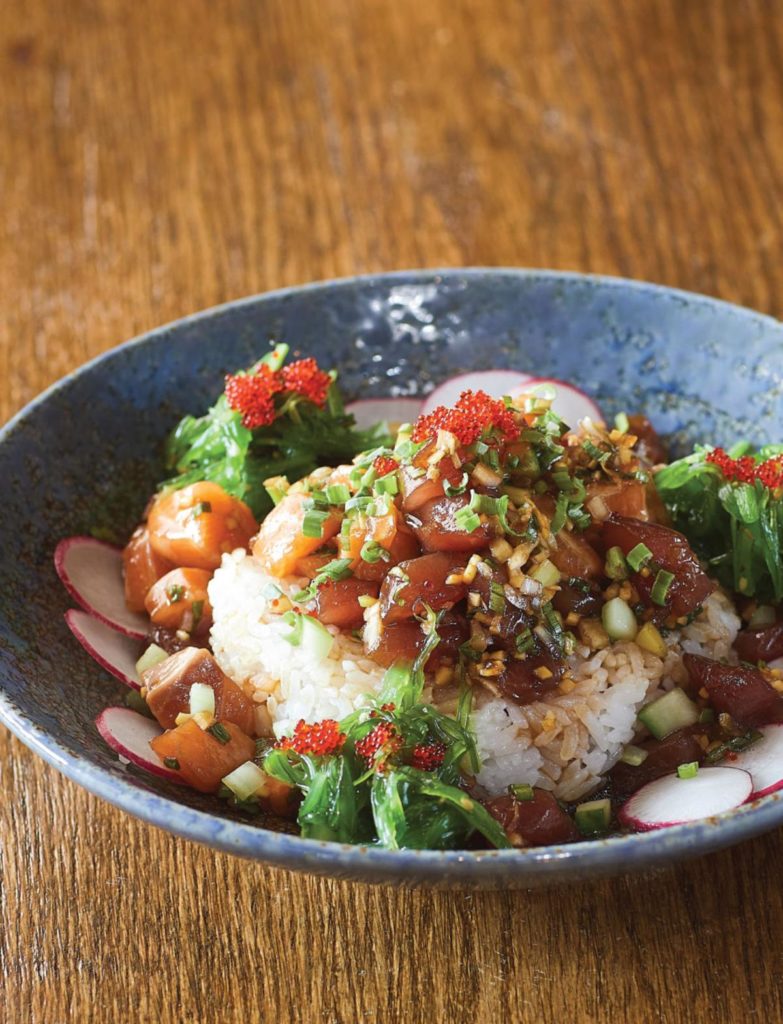
North American Sake’s Tekka Poke Don – Diced yellowfin tuna and salmon poke marinated in sweet soy, mirin, ginger, scallion, tuxedo sesame seeds with seaweed salad, radish, cucumbers, and tobiko, served on a bed of sushi rice.
But anything milled down to below 70 percent of the grain – like all of North American Sake’s current brews – is considered premium sake. And because North American’s sake rice comes from growers in Arkansas and California, it also has a distinctly American flavor.
Centofante can talk genshu (undiluted sake) and nama(unpasteurized sake) with the best of them. But you won’t find a lot of the technical sake jargon at North American. The brewpub mixes old-school Japanese craft with American-style experimentalism and approachability – in a taproom whose food menu is an equal mix of American and Asian flavors. Brunch includes deeply comforting Szechuan-spiced biscuits, while lunch might involve salmon and short rib barbecue made by an old-school pit master, deepened with the same koji used to make the sake.
Among the sakes on offer at North American, you’ll find an equal mix of traditional and American wild-style. Their Big Baby sake – so called because it’s the youngest sake of the bunch, but still really alcoholic – is a traditional unfiltered nigori sake. So it’s sweet and hazily snow-white with rice and yeast. It’s like the juicy New England-style IPA of sakes, with the same friendly softness and satisfying mouthfeel.
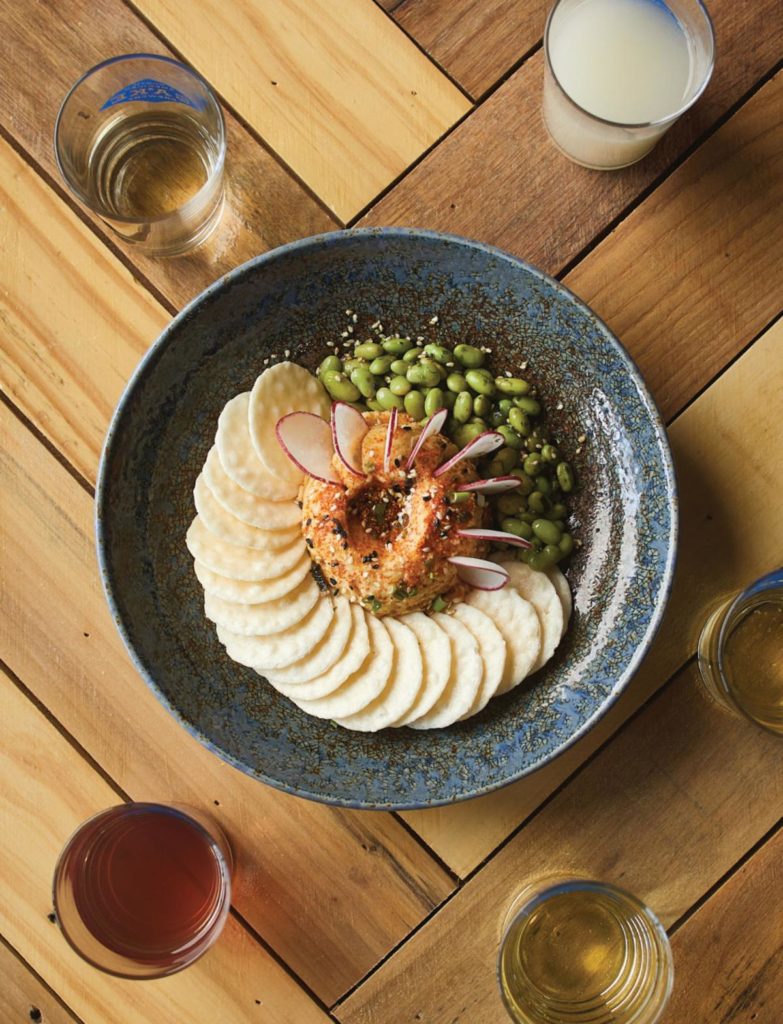
North American Sake’s Miso Hummus plate, with rice crackers, radish, edamame, cucumber, scallions, togarashi and olive oil.
Their other flagship sake, Real Magic, is the same batch of sake after it’s been given a little time to settle, and the difference is startling: The big and fruity banana and melon flavors come out to play. Another traditional- style sake, Quiet Giant, is fermented an extra five days so the sake becomes both more dry and more alcoholic: a whopping 18.5 percent alcohol by volume.
But Centofante is also experimenting with adding fruit flavors. Though Japanese brewers often add plum to their sake, the flavors at North American aren’t any you’ll find in Japan. One is a spicy jalapeno-mango, while another tastes like fruit punch. The best so far, called Sweet Agony, mixes lemon puree and an infusion of fresh mint leaves.
“We’ve had a lot of native Japanese come visit,” Goldstein says. “It really bends their minds. I think it opens their perspective, not that they would ever do it. When they taste our traditional sakes – the flagships, the nigoris and junmais – they see the respect, and the craftsmanship. So when they move into the flavors, they know that it’s coming from a good place.”
As for Centofante, he feels like he’s just scratching the surface of what he wants to do with sake: He’s considering using beer yeasts, wine yeasts and different kinds of koji, and is trading ideas with a small network of American sake brewers from Boston to Texas to California. But he says he has at least one heartening sign that he’s on the right track.
“A guy came in who was training to be a sake sommelier – the son of native Japanese. And they left with a case. You can tell me it’s great. But if you buy a case, that tells you something.”
